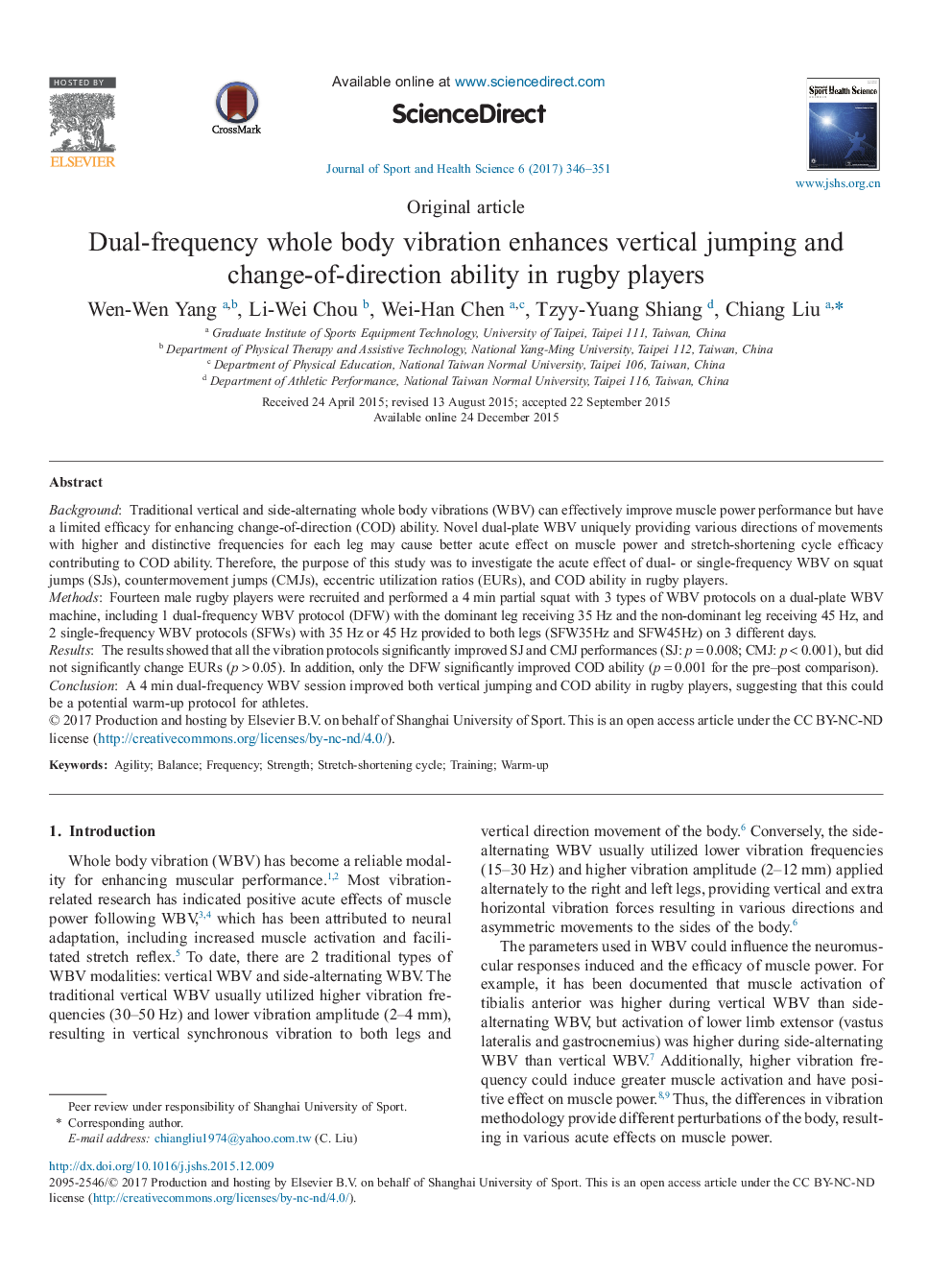| Article ID | Journal | Published Year | Pages | File Type |
|---|---|---|---|---|
| 5122042 | Journal of Sport and Health Science | 2017 | 6 Pages |
BackgroundTraditional vertical and side-alternating whole body vibrations (WBV) can effectively improve muscle power performance but have a limited efficacy for enhancing change-of-direction (COD) ability. Novel dual-plate WBV uniquely providing various directions of movements with higher and distinctive frequencies for each leg may cause better acute effect on muscle power and stretch-shortening cycle efficacy contributing to COD ability. Therefore, the purpose of this study was to investigate the acute effect of dual- or single-frequency WBV on squat jumps (SJs), countermovement jumps (CMJs), eccentric utilization ratios (EURs), and COD ability in rugby players.MethodsFourteen male rugby players were recruited and performed a 4âmin partial squat with 3 types of WBV protocols on a dual-plate WBV machine, including 1 dual-frequency WBV protocol (DFW) with the dominant leg receiving 35âHz and the non-dominant leg receiving 45âHz, and 2 single-frequency WBV protocols (SFWs) with 35âHz or 45âHz provided to both legs (SFW35Hz and SFW45Hz) on 3 different days.ResultsThe results showed that all the vibration protocols significantly improved SJ and CMJ performances (SJ: pâ=â0.008; CMJ: pâ<â0.001), but did not significantly change EURs (pâ>â0.05). In addition, only the DFW significantly improved COD ability (pâ=â0.001 for the pre-post comparison).ConclusionA 4âmin dual-frequency WBV session improved both vertical jumping and COD ability in rugby players, suggesting that this could be a potential warm-up protocol for athletes.
